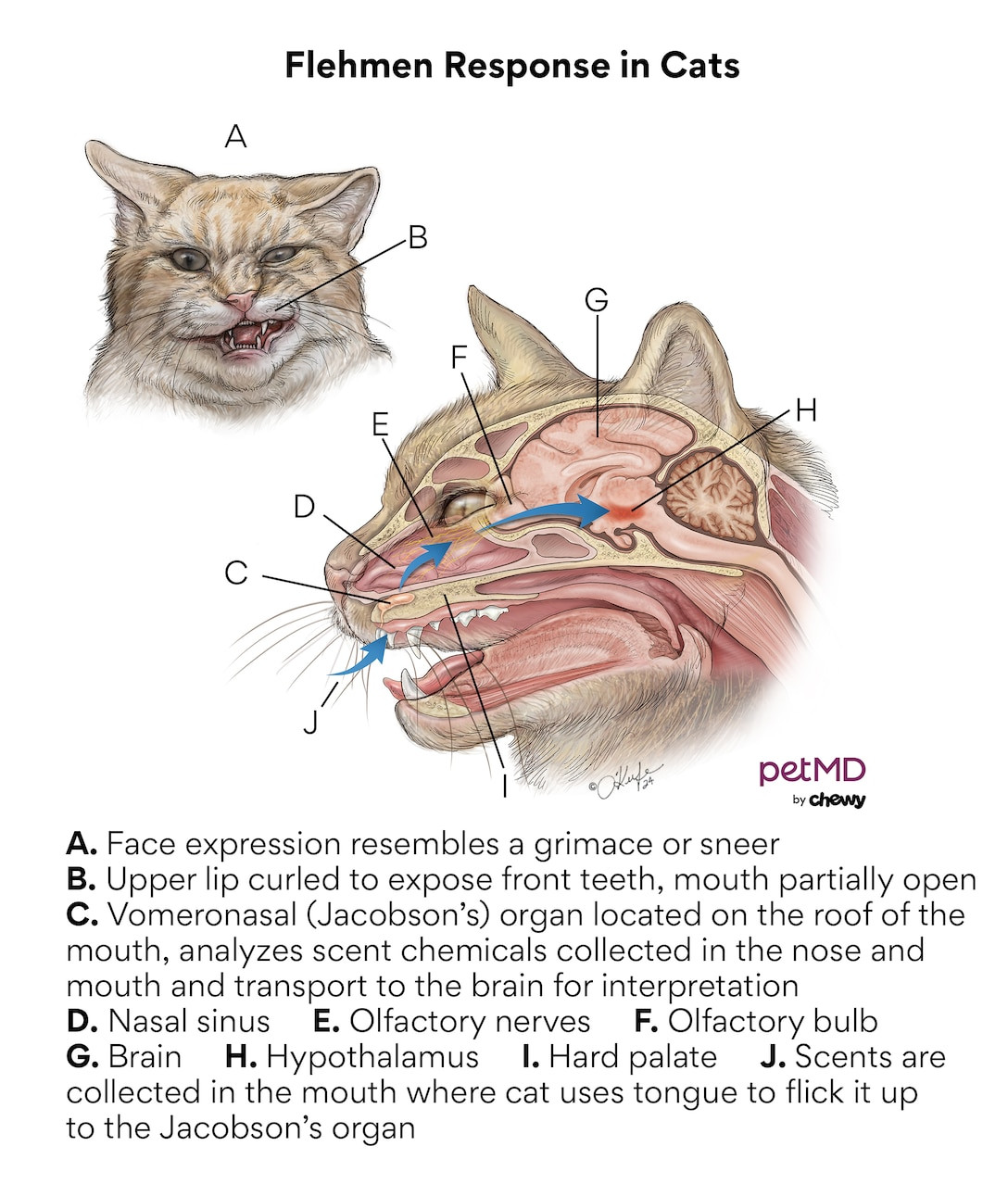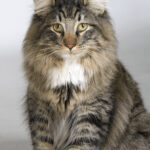Ever caught your feline friend pulling a peculiar “stinky face,” almost like a sneer? That’s likely the flehmen response, a fascinating behavior exhibited by cats (and other animals like horses and tigers). Also known as the flehmen reaction or flehmen grimace, it’s how cats process intriguing scents, especially pheromones. These chemical signals are crucial for communication within their species, conveying messages about territory, mating, and individual identification.
Let’s delve into the world of your cat’s “stinky face” and uncover the secrets behind this curious behavior.
What Exactly is the Flehmen Response in Cats?
The flehmen response is a voluntary behavioral reaction triggered by specific stimuli, primarily odors. It’s a deliberate action, unlike involuntary responses such as drooling at the sight of food. This response allows cats to enhance their sense of smell and gather more information from scents.
When a cat engages in the flehmen response, you’ll notice their mouth slightly open. This posture is key as it allows air to flow over their vomeronasal organ (VNO), also known as Jacobson’s organ.
 Diagram illustrating the feline flehmen response and Vomeronasal Organ function
Diagram illustrating the feline flehmen response and Vomeronasal Organ function
The VNO is an auxiliary olfactory organ situated at the base of the nasal cavity. Its primary function is to process pheromones and hormones released by other animals, typically of the same species. By directly exposing the VNO to these scent molecules, cats can interpret them as a sensation that’s a unique blend of taste and smell.
Most animals that display the flehmen response, including our domestic cats, possess an opening in the roof of their mouth, just behind their upper front teeth. This opening connects to a duct that channels scents directly to the VNO.
The flehmen response isn’t exclusive to domestic cats. It’s also observed in various wild cat species, such as lions and tigers, as well as other animals like horses, goats, and sheep, showcasing its widespread importance in the animal kingdom.
Recognizing the Flehmen Grimace: What Does it Look Like?
In cats, the flehmen response often manifests as a funny grimace, making it seem like they’ve encountered a foul smell. Typically, a cat will curl back its upper lip, exposing the front teeth, keep their mouth slightly agape, and inhale deeply. You might also see them stretch their neck or raise their head.
This distinct pose is held briefly before your cat returns to their normal demeanor. The flehmen posture can sometimes be mistaken for panting, a typical grimace, or even a sneer due to its characteristic facial contortion.
Why Do Cats Flehmen? The Science of Scent Communication
Domestic cats utilize the flehmen response to decode messages embedded within intriguing scents. In most instances, these scents are pheromones originating from other cats.
While commonly observed in male cats assessing a female’s readiness to mate by sniffing her urine, any cat, regardless of sex, can employ the flehmen response when encountering a scent that warrants further investigation. Cats may exhibit this behavior when they encounter smells such as:
- Urine markings
- Piles of dirty laundry
- Secretions from anal glands
- Facial pheromones left by other cats
- Any novel or particularly interesting odor!
So, while your cat’s flehmen response might appear as a reaction to something unpleasant, it doesn’t necessarily indicate disgust. A cat’s flehmen response is about gathering information, not expressing displeasure! Therefore, don’t take it personally if your cat curls their lip after sniffing you – they’re simply trying to understand your unique scent profile.

